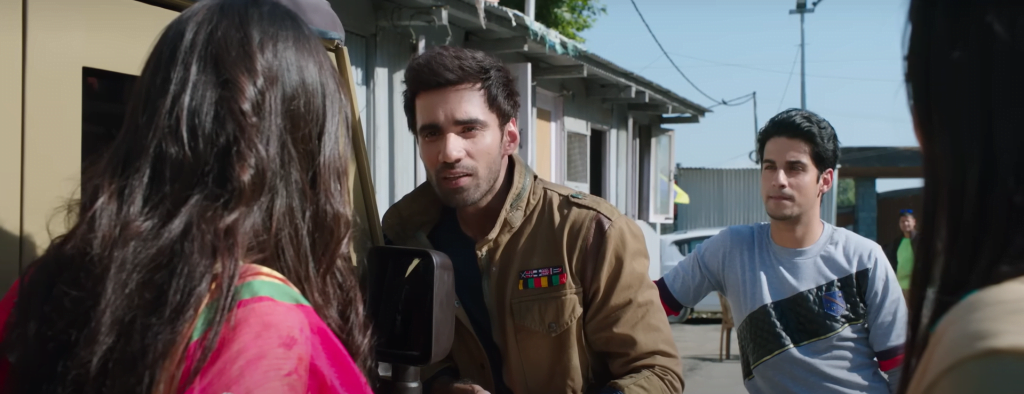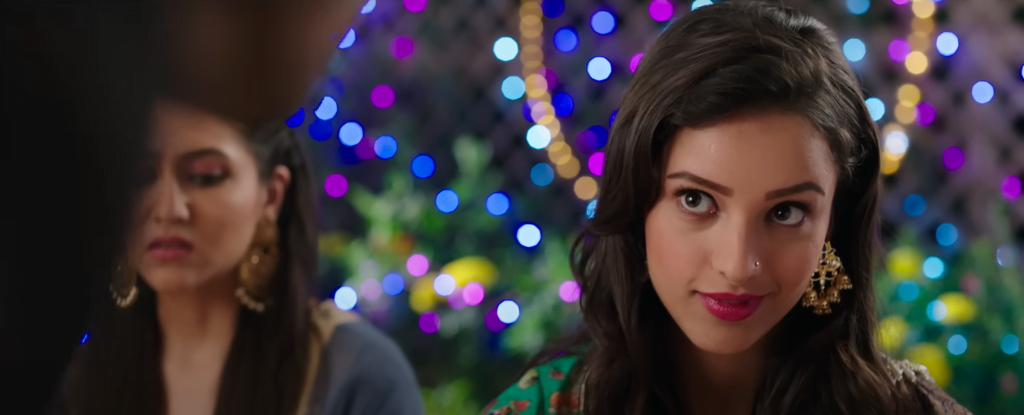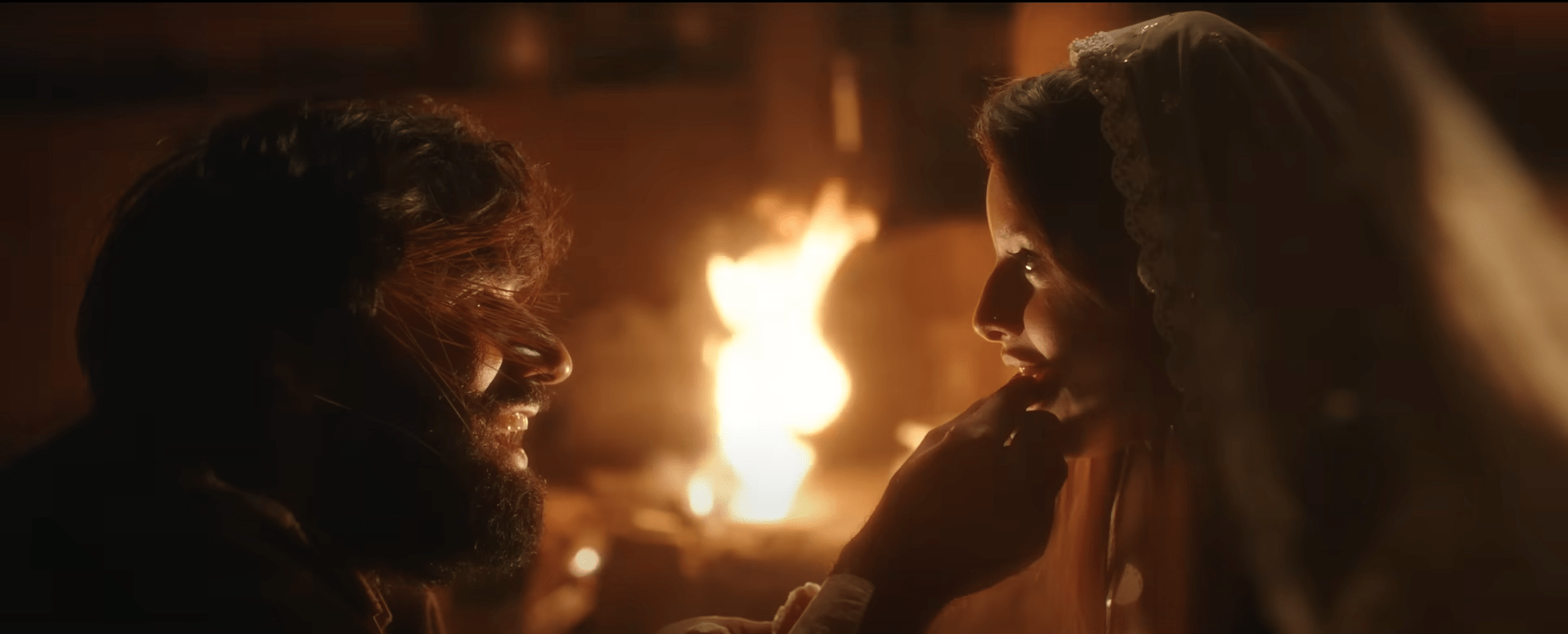“Humari kahaani likhi hui hai. Aur yeh duniya kya yeh duniya ke log bhi ya hum khud bhi usse nahin badal sakte.” (Our story has already been written. Neither this world nor its people, and not even us, can alter its course.)
Perhaps this dialogue by Qais Bhat, played by Avinash Tiwary, can portray not only the essence of this modern-day retelling of the legend of Laila and Majnu but also the legacy of this film, which aged like wine.
The film’s original release in 2018 did not fare well at the box office, earning only Rs. 2.18 crores; however, with its re-release in cinemas in 2024, it is on a roll in capturing the hearts of audiences. It sounds like the fate of this film was predestined to only succeed in its afterlife and not in its original box office run. Much like the fate of the legendary star-crossed lovers in the film.
The choice of Kashmir’s natural landscape connotes love
Directed by Sajid Ali and written by his brother, the usual culprit of heart-wrenching love stories, Imtiaz Ali, the film beautifully encapsulates the natural landscape of Kashmir, but unlike other Bollywood films that seek to tokenise and exoticise the backdrop of Kashmir for depicting crude romance, in Laila Majnu the natural landscape of Kashmir acquires a new meaning. It becomes important for the depiction of the spiritual and devotional idea of love, which the film explores, and for showing Qais’ gradual receding sanity that culminates in his transformation into Majnu.

The ‘romantic,’ with reference to the depiction of nature in Laila Majnu takes the meaning of the ideas of British romanticism instead, of seeking a communion and oneness with nature and, through that, a communion with God. And here, for Majnu, his God is his mashooq (beloved) Laila.
For Qais, who has transcended to madness and become Majnu after the painful waiting and separation of 4 years, his mashooq acquired the stature of divinity, which becomes evident when he calls out her name ‘Laila,’ and ends in a moving scene of Majnu’s painful wailing to the almighty, ‘Laila,’ becoming “La-illah”. Laila to him is omnipresent; she is not a physical entity anymore but a spiritual and divine manifestation. For Majnu, the land beyond the mountains, ‘pahaadon ke peeche wali dunia,’ the unknown, becomes his purpose. By attaining this unknown mystery amidst nature, he shall reach his God—his Laila.
Hence, the scenes that depict Qais’ losing sanity and complete transformation to Majnu take place in the lap of nature, amidst the mountains. In all his time amidst nature, Majnu is accompanied by the manifestation of Laila, a manifestation that seems to disappear when he is back to civilisation. The scenic beauty of the Kashmiri natural landscape hence acquires a different and deeper connotation in the film.
The culture of Kashmir: translating meaning through the film’s soundtrack
The film explores Kashmir’s youth culture and way of life. Some critics have pointed out that it is a utopian version of Kashmir with the absence of a turbulent political reality. However, is engagement with politics and resistance the only reality for the people of Kashmir, devoid of ‘normalcy,’ and ordinariness of life? Kashmiri writer Rahiba R. Parveen writes for The Print, “The movie reminds us that Kashmiris also talk about music, language, food, flirt, and celebrate their big-fat weddings too. Our heads are not always filled with the sound of the guns. There is still room for love, longing, and aimless loitering. For me, however, the movie shows Kashmir that I want everyone else to see. And on this, I believe I am speaking for all Kashmiris. In between all the talk on political unrest and violence, we want to hold on to anything that can brighten our lives and help us exhale a bit.”

The soundtrack of the film has been winning hearts for all the right reasons. The deeper cultural nuance and meanings in the film are complemented by the beautiful soundtrack of the film, which borrows a lot of Kashmiri codes in its lyrics and imagination. Qais’ first appearance is marked by a remix of the song ‘Lala Zula Zalio,’ a culturally recognised Kashmiri track that is played at weddings during the arrival of the groom. The song then again plays at the wedding sequence of the film, where Qais and Laila’s playful flirting comes to an end and a deeper love is born between the two.
The song ‘Hafiz Hafiz,’ a proclamation of Majnu’s madness in love and his escapades with Laila’s manifestation, begins with children chanting “Hukus Bukus,” another cultural code for Kashmiri children’s games. ‘Katyu Chuko,’ is another devastating track in the native tongue that plays at the final moments before we lose Laila, and the fate of the two star-crossed lovers which ultimately wins.
There are also multiple versions of the same tracks like ‘Tum,’ and ‘O’ Meri Laila,’ playing throughout the Laila Majnu, all conveying different senses of emotions like hope, longing, and devastation that are added at various key moments of the film to make the viewers connect on a deeper level to the scene.
Feminist reading of Laila Majnu: fate is determined by factors beyond our control
The key aspects of Laila Majnu’s relationship and their star-crossed fate seemed to call for a feminist reading. From the start, we see that Qais Bhat has it relatively easy for him; he is a privileged man with a powerful father who does not try to be strict towards him (for he is a man). Hence he can conveniently distance himself from ‘duniadaari,’ worldliness, and what the society says owing to his social positioning. After the gap of 4 years, we see that he does have certain obligations of property rights and inheritance owing to his gender identity as a man, which he does forego.

The same cannot be said for Laila, an unmarried woman who shall face the brunt of society’s scrutiny in their relationship. With Laila comes the question of the attachment of the family’s honour to her chastity and sexuality. From the start, we see the imbalance in the starting points of both Laila and Qais: Laila, is bound by ‘duniadaari,’ by the patriarchal society’s constraints on her as a woman, while Qais is a free man, which is why it is easy for Qais to openly call to Laila to leave her arranged marriage and elope with him, but it is not easy for Laila to conveniently leave.
“Intezzar, lamba intezaar bas thoda aur intezzar, divorce ka intezaar, iddat ka intezaar. Saamne khadi hai phir bhi intezaar. Bas intezaar, yeh intezaar pagal kar dega mujhe.“
The iconic dialogue of Qais highlights this very aspect; his tragedy arises from the fact that he is able to break free from the constraints of worldliness as a man, which rather than becoming a blessing becomes his curse, and then he ultimately transcends into a state of insanity with this freedom. On the other hand, Laila stays bound owing to her gender identity as a woman and looks for socially acceptable ways to consummate their relationship, whether it is seeking her father’s approval or waiting for the mourning period to be over even after the death of her husband.
This is why the only way for Laila to let go of ‘duniadaari,’ the ways of the world, and the constraints of society is to leave the world behind and follow Majnu towards God. Laila knew Qais was long gone towards God by accepting Laila as his Almighty, and hence the only way for her to be with him was to follow him in the only plausible way she could think of: death.
Final thoughts on Laila Majnu
Hopeless romantics might be uncritical in their great experience with the film, but some choices could have provided a better cinematic experience of this retelling. A rather simple observation regarding the film can be the role of Tripti Dimri as Laila, a character that, if explored more intricately, could have had the potential of adding to the intensity of the tragic love story.

Laila Majnu falls into the same pipeline of Imtiaz Ali’s treatment of women characters in his other tragic stories: the lovers may start from seemingly the same starting point in terms of representation on screen, but the film ends up being centred around the man and becoming about the plight of the man instead, while the woman recedes into the background.
The film does make an effort to show the early signs of Qais’ deterioration into insanity due to the impact of the separation and wait of 4 years; however, we do not see much of Laila’s condition in these 4 years other than a few seemingly isolated incidents of her husband’s alcoholism and the domestic violence sequence. With Majnu, she completely fades into the background as the silent manifestation and his mere companion.
One may even argue that the film could not give much space for the dynamic between Laila and Majnu to develop more deeply and connect with a greater depth with the audience. The first half of the film felt incredibly fast-paced, as an attempt to gloss over it and focus more on the second half of the film. It relied more on the audiences to fill in the gaps of their lacking bond in the story with the familiarity with the legend: that their magical bond is the action of fate. Now, the beautiful soundtrack of the film does come to its rescue with this point and does add the needed intensity to their bond, along with the beautiful chemistry between Avinash Tiwary and Tripti Dimri.
Overall, Laila Majnu was beautifully intense. It is a treat for hopeless romantics, angst lovers, and those who yearn for the comeback of the simple and sweet Bollywood of the past. The fact that the legend keeps finding its relevance over the course of years and keeps resonating with the people is a testament to its enduring legacy.
About the author(s)
Sarah (She/Her) is your local student journalist and writer pursuing her Bachelor's in Literature from Delhi University. She seeks to strike a balance between a chaotic chronically online gen-z and an insatiable learner. At the risk of coming across as cheesy, she quotes Oscar Wilde on being asked to introduce herself, "To define is to limit."





